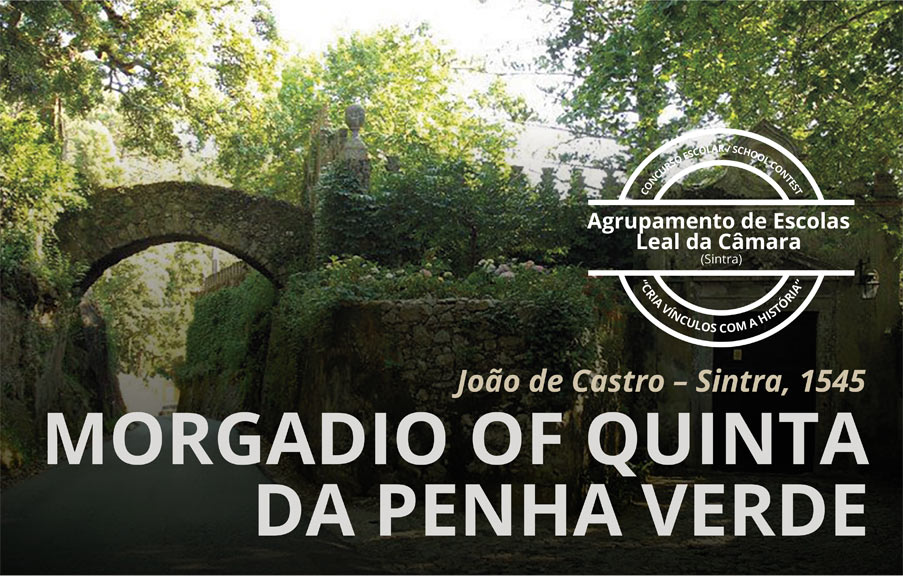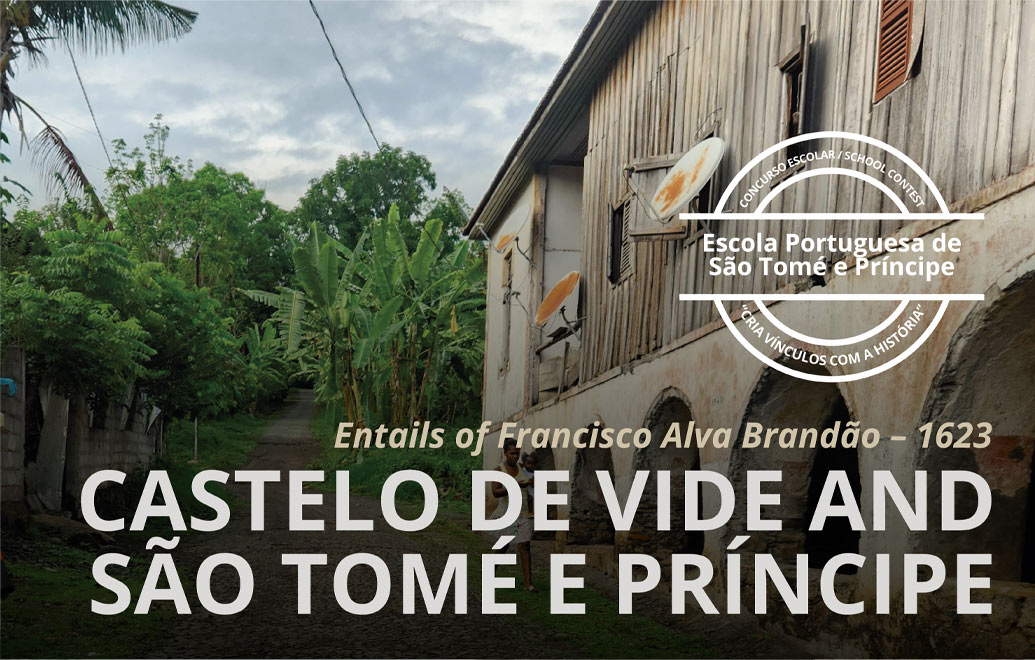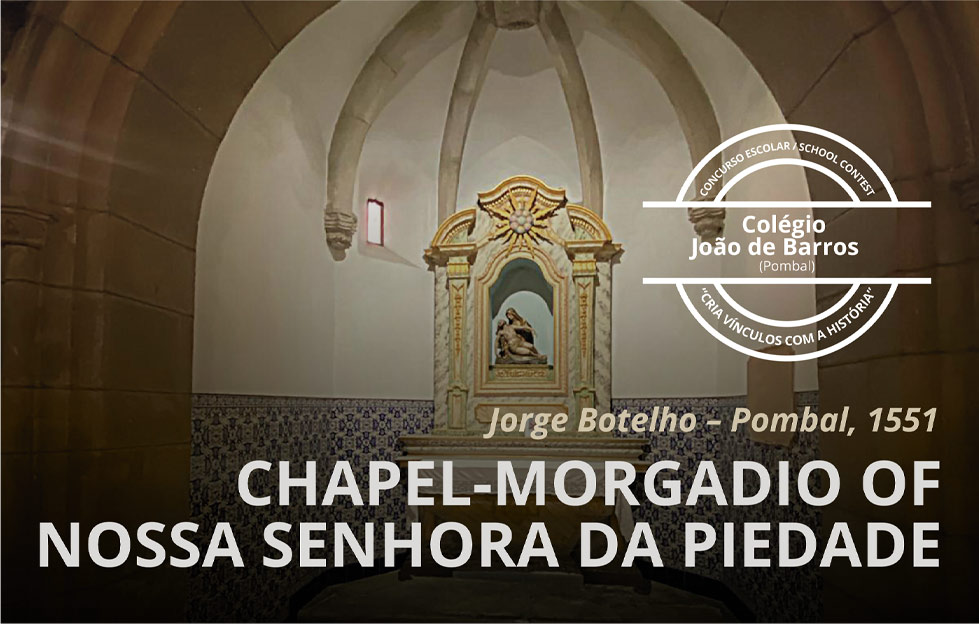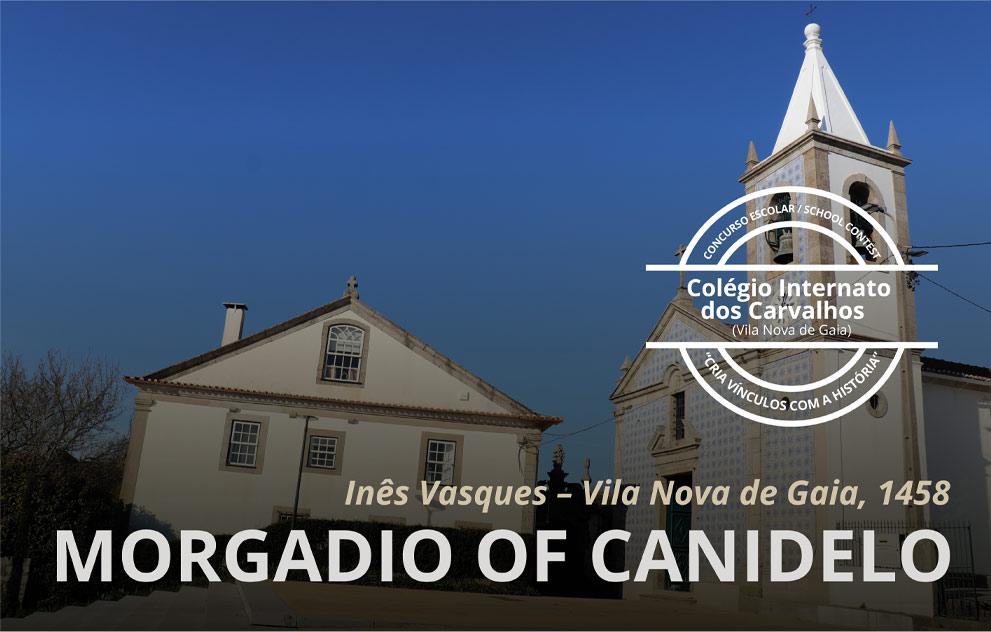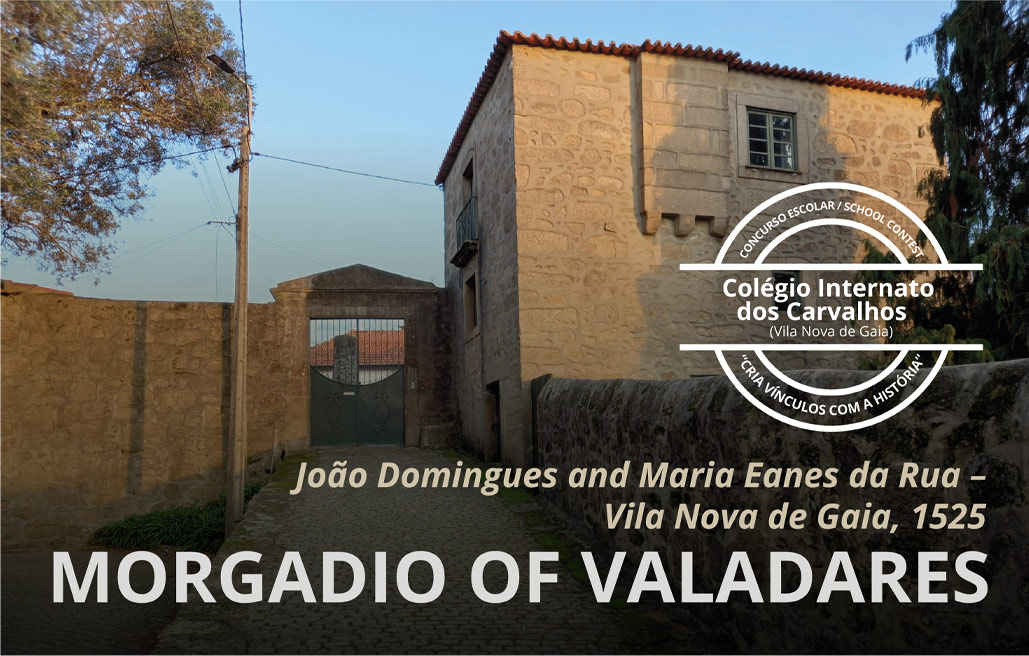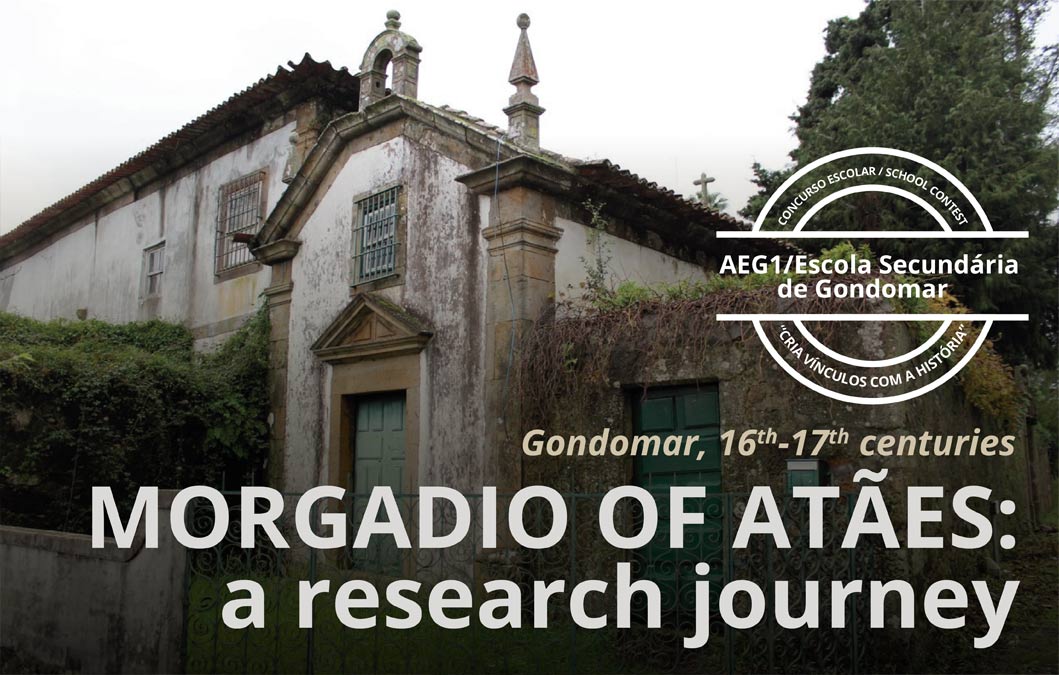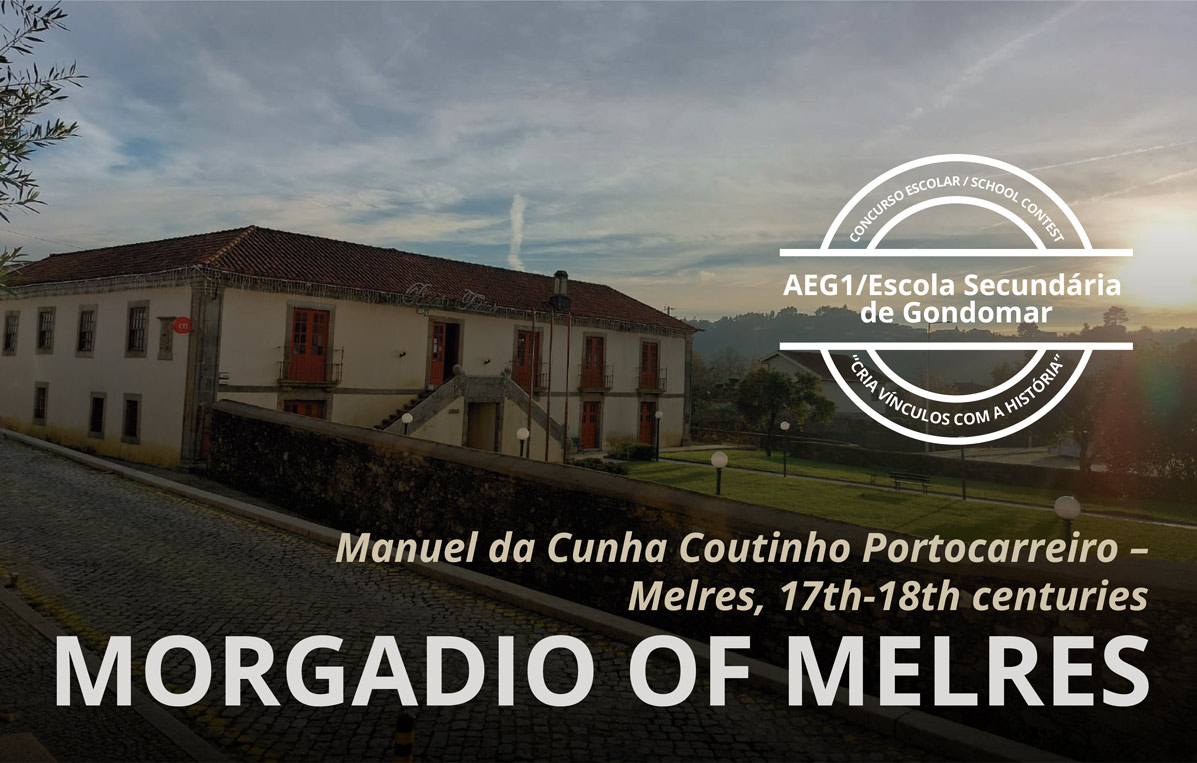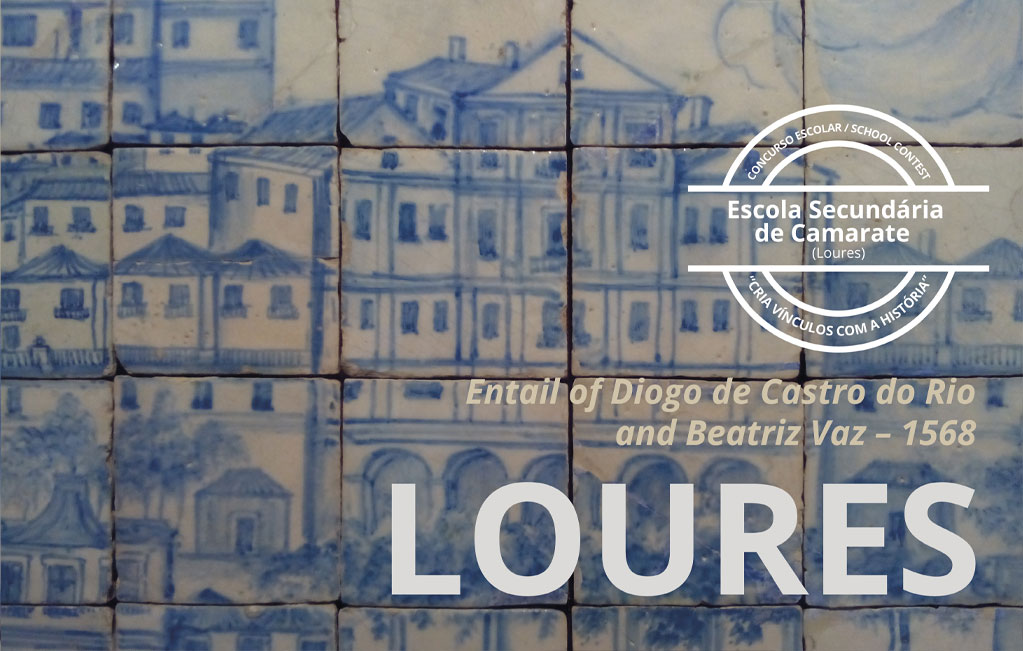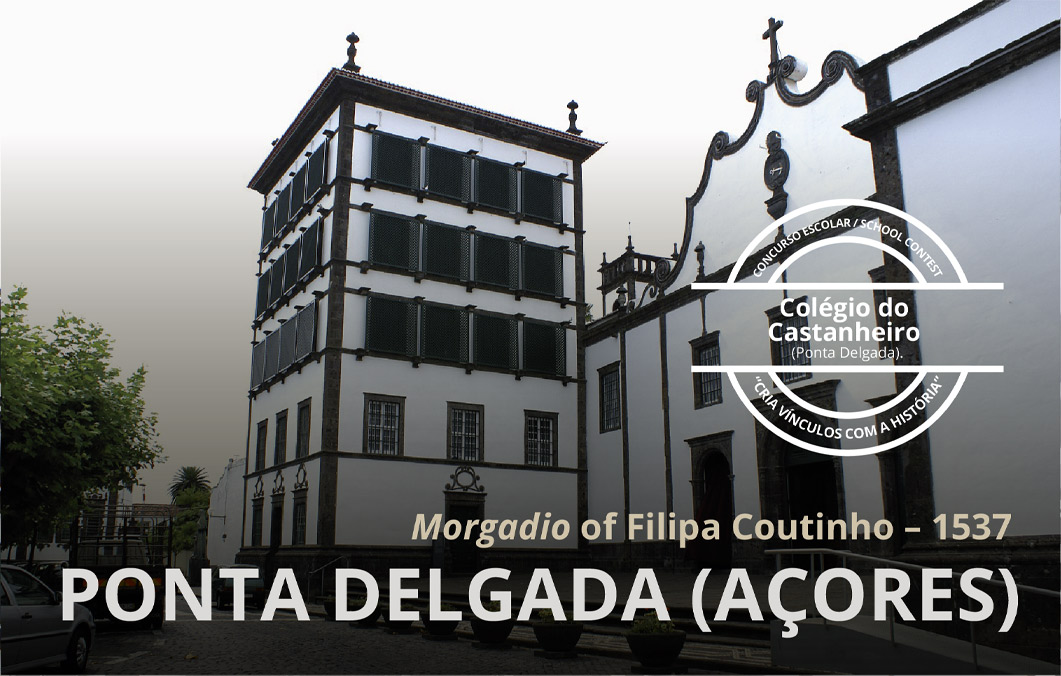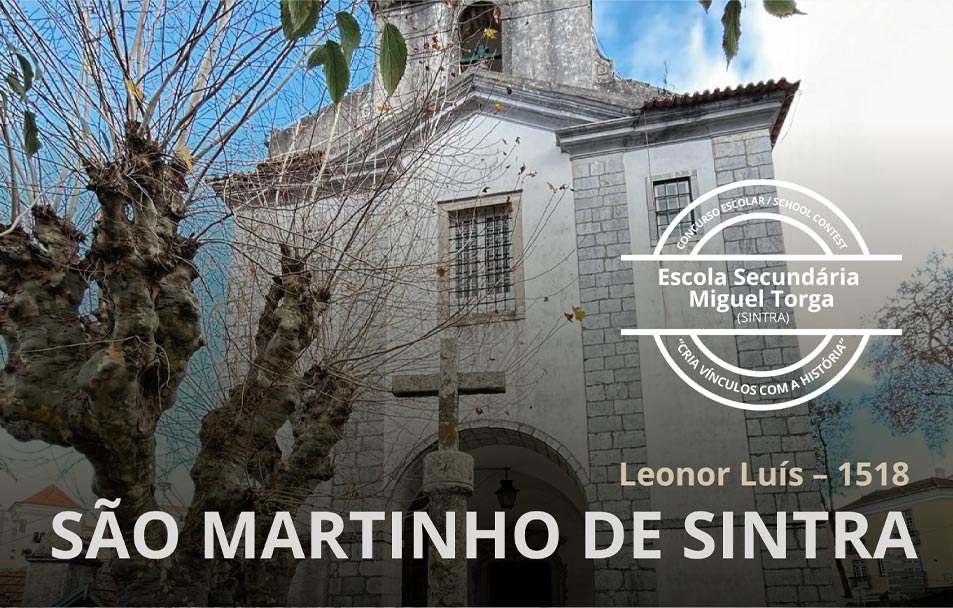Entail of the month (October, 2023)
Morgadio of Molelos
Henriques Esteves and Filipa Nunes, Molelos, 1520
The village of Molelos is located in the Besteiros valley, south of the Caramulo mountain range, in the municipality of Tondela. Its human occupation dates back to the copper age and its name is mentioned in documents for the first time in the will of the priest Hermígio, dated June 1, 1101. In it, the priest donates to the monastery of Lorvão, in the person of its prior Eusébio, the church and the entire site of Molelos, adding that he had obtained these assets during the Christian Reconquista (reconquest of the Muslim Kingdoms), together with his parents, Truquesindo and Araguntes, during the time of King Afonso VI of León and Castile and the second Count of Coimbra, Sesnando Davides (CARVALHO, 1981: 171).
Molelos was the administrative seat of the extinct municipality of Besteiros, which received administrative autonomy by order of King Manuel.
[Fig. 1] Coat of arms in the Tombo of the morgadio of Molelos.
The house of Molelos is located in the heart of the village that gives it its name. It was, originally, a medieval tower-house (the ruins of which still existed in the mid-seventeenth century) and, at the beginning of the fifteenth century, it was inhabited by the family of Henrique Esteves and his wife, Filipa Nunes, founders of the morgadio of Molelos (DUARTE & FERROS & COIMBRA, 2018: 70 ff,).
Owners of a vast patrimony, it is difficult for us today to understand its extent. In addition to the property of Molelos, Henrique Esteves administered the chapel of the Holy Spirit, which he established in the convent of São Francisco of Orgens, in Viseu; the chapel of São Leonardo, in the church of Santa Justa in Coimbra, established by his ascendant, Leonardo Esteves; the honor of Nandufe, with its properties of Santa Ovaia and Valverde; various senhorios (jurisdictional rights) and properties in Aveiro, Recardães, Mortágua, etc (FERROS & FERROS & LEITÂO, 2017: 177 and following).
It was on the “homestread of the virtuous Henrique Esteves, a nobleman, and Filipa Nunes, his wife”, in Molelos that, on June 16, 1520, in the presence of João Fernandes, notary of the municipality of Besteiros, Manuel de Azevedo, a knight, and António Fernandes de Quadros, Filipa Nunes’ cousin, the joint will of this couple was signed (APM – Tombo do Morgado de Molelos, 1659, fl. 5v).
[Fig. 2] House of Molelos.
As their last will and testament, “they said that they, for the remission of their sins, would ordain on this day for all time a chapel in the church of São Pedro, next to the homestead of Molelos”. They appointed Henrique da Veiga, their second son, as administrator and, for the institution of this chapel, they both made use of a third of all their patrimonial assets, considering that those of Molelos represented two hundred and fifty thousand reais out of the more than one million and fifty thousand in which they valued everything. In this way, no questions would be raised about the inheritance of their eldest son, Fernão Nuno.
As for the succession of the morgadio, it was to follow the descendants of Henrique da Veiga’s first-born son, and so on. In addition to the pious charges and payments to the royal granary, the future administrators were obliged to reside in Molelos for at least two months a year “to fulfill the said charges”, and the administrator could only be excused from doing so if he was absent in the service of the king. They left the responsibility of overseeing the obligations of the morgadio to the judges of Besteiros, who were given a pig of forty arráteis (weight unit) and a pair of capons for this task, and stipulated that if they were unable to enforce it, they should ask the bishop of Viseu to do so. If the administrators failed to comply, the king should be asked to give the administration of the entail to “the closest relative of their generation”.
Henrique Esteves died in September 1523. Shortly afterwards, on February 7, 1525, his widow, Filipa Nunes, being ill, made a codicil to the will. In it she ordered her executors to have a silver cross made, of three marks, which she left to the church of Molelos, on the condition that it would always remain in the custody and power of the administrator of the morgadio and his heirs (APM – Tombo do Morgado de Molelos, 1659, fl. 14v).
[Fig. 3] Frontispiece of the Tombo of the morgadio of Molelos.
Henrique da Veiga, the first administrator of the morgadio, married Beatriz Henriques, from Aveiro. Both made their joint will in Aveiro on July 16, 1561 (APM – Tombo do Morgado de Molelos, 1659, fl. 18). By this time, the chapel had already been built and the testators added to the morgadio‘s obligations the annual payment of two alqueires (measuring unit) of olive oil to “light the lamp in the said chapel”, as well as other pious charges. That is why they added other proprieties to the morgadio‘s patrimonial assets. Finally, after describing various legacies to their heirs, they left the remainder of their disposable inheritance, made up of all the property they owned in the place of Botulho (parish of Molelos), to the morgadio of Molelos.
The following generations also added assets to the morgadio and, mainly for reasons of marriage, the administration of the entails of the chapel of D. Gil Alma, in São Domingos of Lisboa, and the morgadio of D. Pedro Vieira da Silva, in Batalha, were added to the House of Molelos.
After the extinction of the entails, these assets were diluted in various inheritances, with the house of Molelos still in the possession of descendants of the morgadio‘s founders, Henrique Esteves and Filipa Nunes.
Manuel Ferros
Coordination: Maria de Lurdes Rosa and Rita Sampaio da Nóvoa
Sources and bibliography
Arquivo do Paço de Molelos (APM), Tombo do Morgado de Molelos (1659).
Carvalho, A. F.,(1981) – A Terra de Besteiros e o Actual Concelho de Tondela. (2ª ed). Tondela: Câmara Municipal de Tondela.
Duarte, A., Ferros, M. & Coimbra, R. (Coor). (2018) – Molelos – Estudo Monográfico. Molelos. Centro Social Paroquial de Molelos.
Ferros, L., Ferros, M. & Leitão, R. A: (2017) – Concelho de Tondela – Heráldica, História e Património. Lisboa: Edições Colibri.
Other entails of the month



